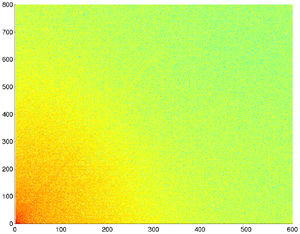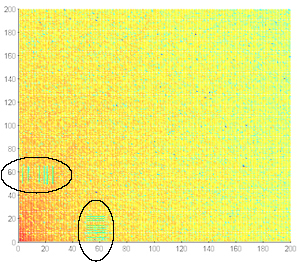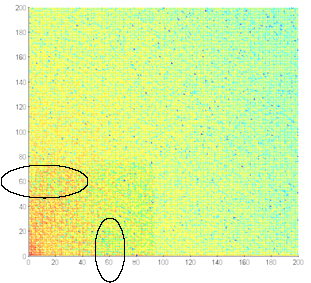Background Information
Division of Labor
About Us
Overview
Purpose
Create a robust data-hiding and recovery algorithm for still images that can survive the printing.
The main goal of our project was to hide a text message into an image and retrieve the message even after the image had been printed and scanned back into a computer.
Hiding data in digital images has been studied significantly. However, allowing images to pass through the printing and scanning process with the coded message intact is a unique and applicable extension of data hiding research. Interested in addressing an area not previously thoroughly researched, we decided to investigate the effect of the printing and scanning process on data-hiding and recovery.
A Pictoral Overview

|

|
The above picture, what we will refer to as the “host image”, is the original image before any manipulations were performed. The graph to the right is a frequency domain representation of this image. The discrete cosine transform (dct) was used to transform the image from the spatial domain to the frequency domain.

|

|
The above picture is the host image embedded with another signal. The coefficients altered to hide the message are visible in the frequency representation of this image. The green bands visible in the circled part of the frequency representation indicate a 1 was encoded in that block. The frequencies were not changed in the spectrum to encode a zero, so the 0’s are not visible without knowing where to look.
Hiding the data in the frequency domain resulted in a small distortion visible to the human eye. The distortion is noticeable in the plain colors of the umbrella, where dimples seem to appear. Gradual waves are also noticeable upon inspection in the grassy area of the image.

|

|
The above picture is the host image embedded with a message, after being printed out and scanned back in to the computer. The quality of the image is noticeably less than the images before the printing process. Examining the frequency domain of the scanned image, it can be seen that the crisp and clear altered frequencies are no longer easily visible. The effects of the printing and scanning process negatively affected the frequency domain. Much time was devoted to creation of an algorithm for recovering the data initially hidden in the image.